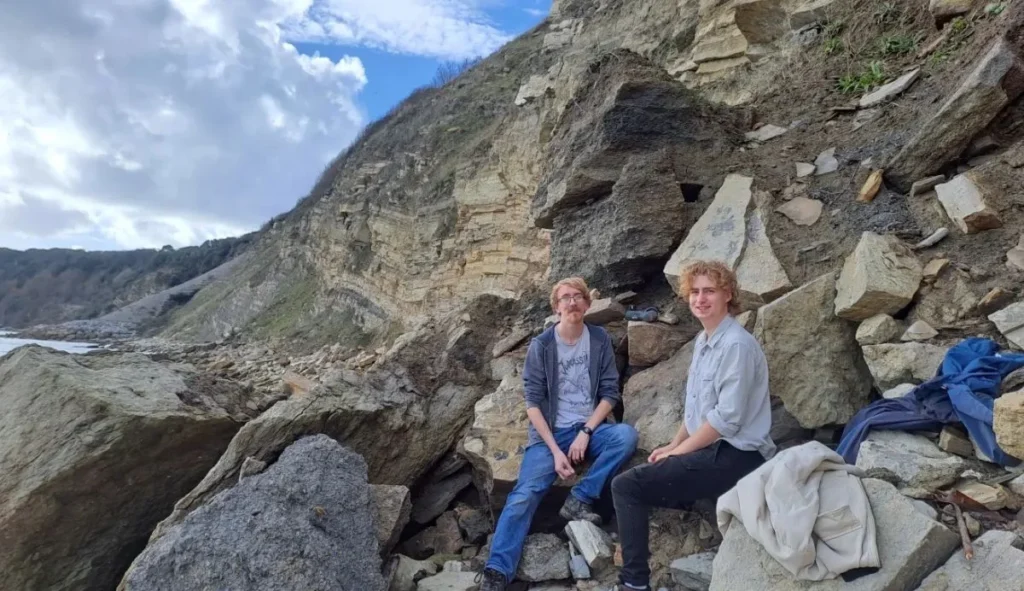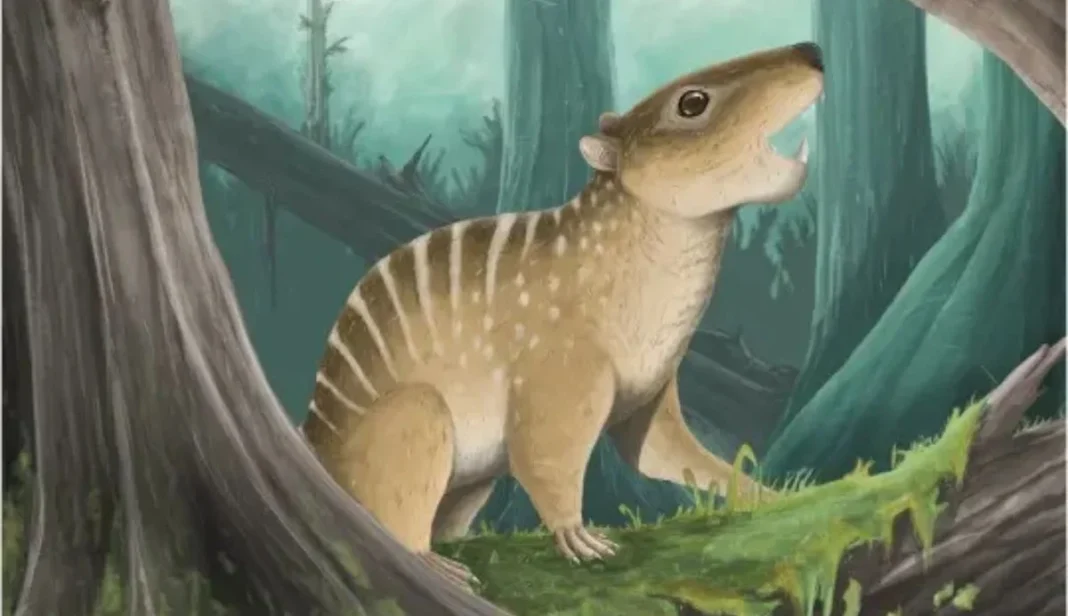A University of Portsmouth undergraduate has unearthed a 145-million-year-old prehistoric mammal fossil from Dorset’s coastline, marking the first multituberculate jaw discovered at Swanage since Victorian times and representing an entirely new species.
Benjamin Weston, studying palaeontology at the university, made the extraordinary find whilst conducting fieldwork along the cliffs of Durlston Bay near Swanage. The fossilised lower jaw belongs to a previously unknown species of multituberculate – an extinct group of early mammals characterised by unique tubercles on their back teeth.
The tiny 16.5mm jaw features a pointed incisor at the front, followed by a gap and four sharp premolars. Despite bearing some resemblance to a rabbit’s jaw, the pointed incisors and distinctive premolars clearly identify it as belonging to the multituberculate family.
Published in the Proceedings of the Geologists’ Association, this discovery represents the third new species found in Dorset by Portsmouth undergraduates within the past decade. The specimen’s unique dimensions and characteristics confirmed it as a completely new species from the Berriasian age.
“I immediately suspected what the jaw might be when I discovered it on the beach, but I could never have imagined where this find would lead,” commented Ben Weston. “I’m tremendously grateful to the team and the university for supporting my initial steps into academic palaeontology.”
The delicate fossil posed significant challenges, with rock fragments concealing crucial details. The university’s sophisticated CT scanning technology proved vital to the research process. Dr Charles Wood, Senior Scientific Officer in the School of Electrical and Mechanical Engineering, employed CT scanning to reveal the specimen within the rock, achieving exceptional results due to the contrast between the fossil and surrounding material.
The research team subsequently worked with Jake Keane, a former Portsmouth palaeontology student now based in Abu Dhabi, who processed the CT scans digitally. Within hours, Keane had digitally extracted all surrounding rock and conducted “digital dental surgery” to separate individual teeth for comprehensive analysis.
Using these digital files, Lead Technician John Fearnly at the university’s 3D printing laboratory in the Faculty of Technology produced replicas magnified ten times, enabling safe examination of the precious fossil without risk of damage.
The newly identified species has been christened Novaculadon mirabilis, with “novacula” referencing its razor-like posterior teeth and “mirabilis” acknowledging the miraculous preservation of the specimen.
Portsmouth palaeontology student Hamzah Imran produced an artistic reconstruction depicting the creature as a small, furry animal with speculative spots and stripes.
Fossil evidence indicates Novaculadon mirabilis was omnivorous, probably consuming small invertebrates including worms and insects. The sharp-pointed incisors and ridged, blade-like premolars suggest a feeding approach different from modern rodents such as squirrels and rats.
The research was supervised by Dr Roy Smith and Emeritus Professor David Martill, who brought in the expertise of Dr Steve Sweetman, a former Portsmouth student and current honorary research fellow specialising in rare Early Cretaceous mammal fossils from the Isle of Wight and Isle of Purbeck areas.
This marks another significant student discovery in Dorset. In 2017, undergraduate Grant Smith recovered fossils of two new species of humanity’s earliest ancestors from rocks exposed in cliffs near Swanage.
Dr Sweetman remarked: “This is an exceptional find that brings back memories of when Grant discovered those remarkable eutherian mammal teeth. When I first examined Grant’s specimens, my jaw dropped – and I experienced exactly the same reaction to Ben’s multituberculate jaw. It’s extraordinary that Durlston Bay continues to yield such important mammal discoveries by our undergraduate students.”
- Portsmouth achieves top 10 ranking for learning resources
- Portsmouth Scientists Plan Moon Mission to Study Cosmic Dawn
Emeritus Professor Martill reflected on the collaborative research approach: “Looking back now that the discovery has been published, I’m astounded by how many people it required to describe this tiny mammal. I particularly valued that all team members were university staff or current and former students – a genuine team effort involving academics, technicians, alumni, and students with varied expertise across three departments.”
The research illustrates how early mammals established ecological niches whilst dinosaurs dominated the landscape. Although multituberculates survived the extinction event that eliminated dinosaurs, they eventually became extinct approximately 33 million years ago during the Oligocene period.

Multituberculata represents the most diverse order of Mesozoic mammals, with over 200 known species ranging from mouse-sized to beaver-sized creatures. These mammals occupied various ecological niches throughout their 130-million-year evolutionary history, from burrow-dwelling species to squirrel-like tree climbers.
The discovery enhances Portsmouth’s expanding reputation in palaeontological research and highlights the importance of undergraduate fieldwork in advancing scientific understanding.
The University of Portsmouth‘s BSc (Hons) Palaeontology degree provides a uniquely practical learning experience, benefiting from its proximity to the Isle of Wight – dubbed “Dinosaur Island” for its abundant fossil heritage. Students enjoy regular field trips to world-renowned fossil sites including the Isle of Wight and the Jurassic Coast, gaining practical experience that complements classroom learning.
Accredited by The Geological Society of London, the course combines state-of-the-art facilities, expert instruction, and a flexible “Connected Degree” structure that permits paid placements or self-employment years, preparing graduates for careers in science, consultancy, or museum work.



